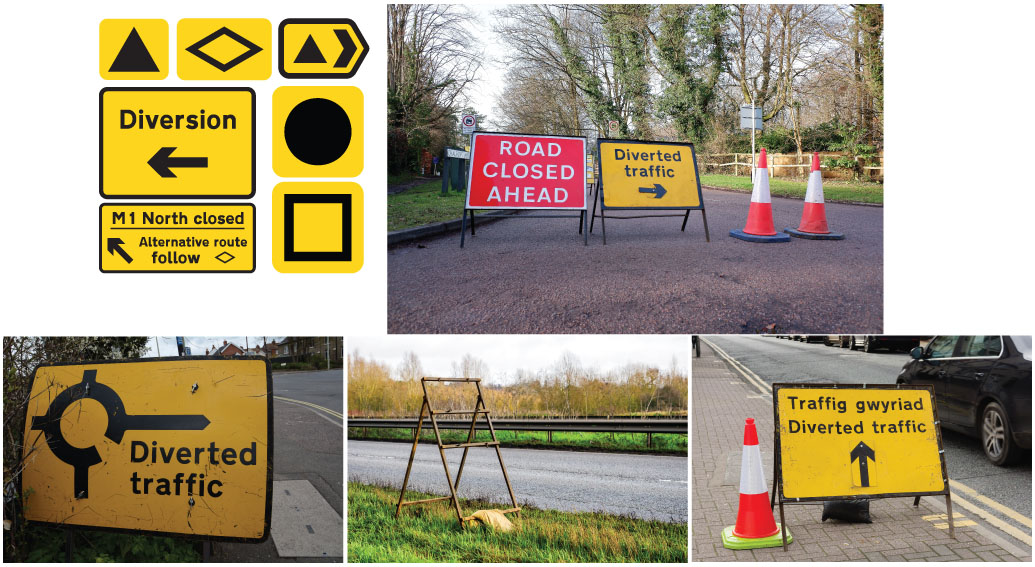
Motorways are heavily utilised by long-distance traffic, and often there are numerous drivers passing through who are unfamiliar with the area. While this is typically not an issue, it can pose challenges when a motorway unexpectedly closes.
That's where emergency diversion routes come into play. These routes are designed to guide motorists back onto the motorway at the next junction, even if they have no knowledge of the local area. They are readily available for use and exist throughout the country, providing diversion options for any segment of motorway that may need to be closed.
So, what do these signs look like and how do they work? Read on to find out.
What Signs Are Used For Diversion Routes?
Traffic diversion signs are commonly seen on or near motorways, typically featuring a yellow background with black lettering or symbols. The symbols used include a black square, triangle, circle, and diamond, which can be either filled in or outlined, resulting in eight possible variations. These symbols highlight an emergency diversion route, directing traffic off the motorway onto local roads in case of closures or disruptions.
How Do Diversion Routes Work?
Here's how emergency road diversion signs typically work:
Trigger Sign
A trigger sign, often located at the entrance of a motorway, is used to indicate the start of a diversion route. This sign is typically covered or folded up when not in use but can be uncovered or unfolded when a diversion is activated.
Diversion Symbols
Diversion symbols, which are usually in the form of geometric shapes such as squares, triangles, circles, or diamonds, are affixed to existing road signs along the diversion route. These symbols are typically coloured with highly contrasting colours like yellow with black lettering to provide high visibility to motorists.
Follow the Symbols
Once the diversion is active, motorists are instructed to follow the designated symbol(s) to stay on the diversion route. The symbols are strategically placed at intersections, junctions, and decision points to guide motorists along the diversion path.
Consistency
Diversion route signs are designed to be consistent along the entire route, with the same symbols and directions used consistently throughout the diversion. This helps ensure that motorists can easily follow the designated route without confusion.
Re-joining the Original Route
Diversion signs also provide guidance on how to re-join the original route once the diversion is over. This typically involves following the symbols until reaching a point where the original route is accessible again, at which point, regular road signs take over.
It's important for motorists to closely follow diversion route signs and directions, and exercise caution while driving, as the route may involve unfamiliar roads or conditions. Following the designated signs helps ensure safe and efficient traffic flow during road closures or other disruptions.
Ensure Road Safety with Label Source
Here at Label Source, we have an extensive range of road signs available. All our traffic signs are suitable for permanent use on roads, on-site use, as well as on public highways. Our collection includes warning, regulatory, informational, frame, speed limit and roadwork signs, and all Label Source traffic signs are compliant with Chapter 8 of the Traffic Signs Regulations and General Directions 2002 (TSRGD).